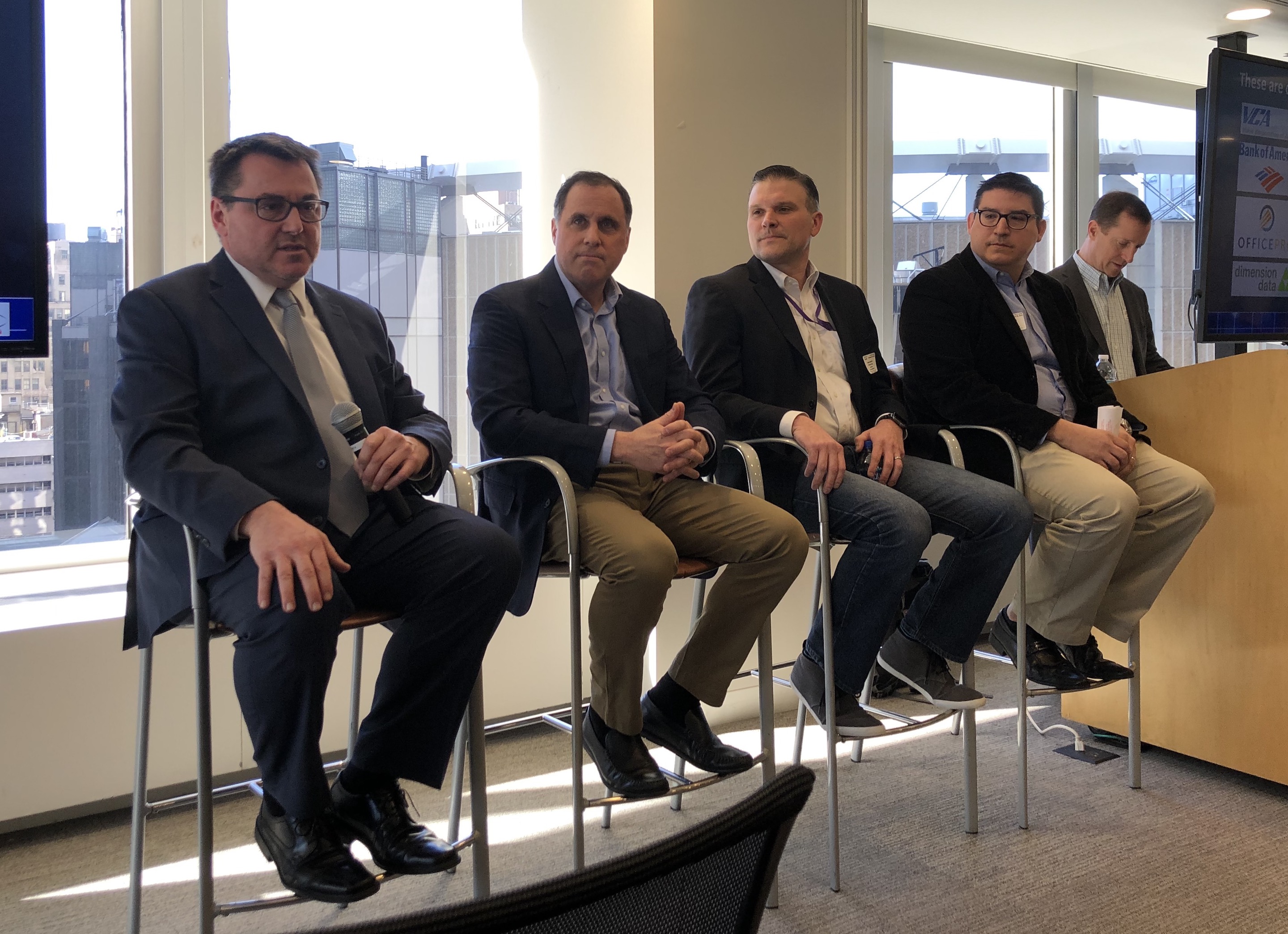Hard-codec conferencing isn’t dead. While the tremendous growth of software-based platforms has grabbed headlines of late, there’s still plenty of reasons to employ a hybrid approach with ongoing deployment of dedicated equipment, according to the presentations and discussions on day two of IMCCA’s Collaboration Week New York.

The Tuesday morning event, titled “Robust, Enterprise Grade Collaboration Ecosystems,” and hosted at Cisco’s offices in One Penn Plaza, got underway with a presentation by Irwin Lazar, VP and service director, Nemertes Research, on the findings of the company’s research on visual communications and collaboration from the summer of 2018.
“Organizations tell us that the days of one meeting application for the entire company is gone,” Lazar said. “[They say] ‘I will spend my first call on Cisco, my second on Zoom, my third on BlueJeans, then maybe Go To Meeting in the afternoon.’ So they want that flexibility, and it becomes a challenge when your room’s system only supports the vendor that you’ve provisioned for. So avoiding lock-in becomes a challenge.”
While the use of soft-codec conferencing will continue to grow to meet varying usage demands, Lazar feels that dedicated systems will retain significance going forward as the further development of AI, voice control, 4K imaging, and other emerging features will require dedicated hardware.
Following Lazar’s presentation, a panel featuring Craig Tepke of VCA, Aaron Udler of Office Pro, James Koniecki of Dimension Data, and David Stern of Bank of America discussed ways of driving increased adoption and ROI on collaboration systems. Here are their takeaways:
1. Understand customers and their requirements
“You do that, then you can understand what you’re trying to deliver, what to have in your toolkit to deliver it, and why,” Stern said. “I’m not doing this just to check off a box in my review at the end of the year that says ‘I delivered video.’”
2. Challenge the way that you work
“Look at your catalog of services; oftentimes employees have no idea the technologies that are available to them,” Koniecki said. “Help them understand what they are, and also make it fun along the way.”
3. Keep it simple
“Make it easy for the end users, because the easier it is, the higher implementation and adoption that will take place,” Udler said.
4. Change the customer approach
“For integration and programming, how we change and go forward is changing the way we approach our customers and getting to the experience,” Tepke said. “Not getting into the hardware, not into the choices, but how they’re going to experience it. Go inside their environment and see how they work.”
See other coverage of IMCCA's Collaboration Week New York here:
